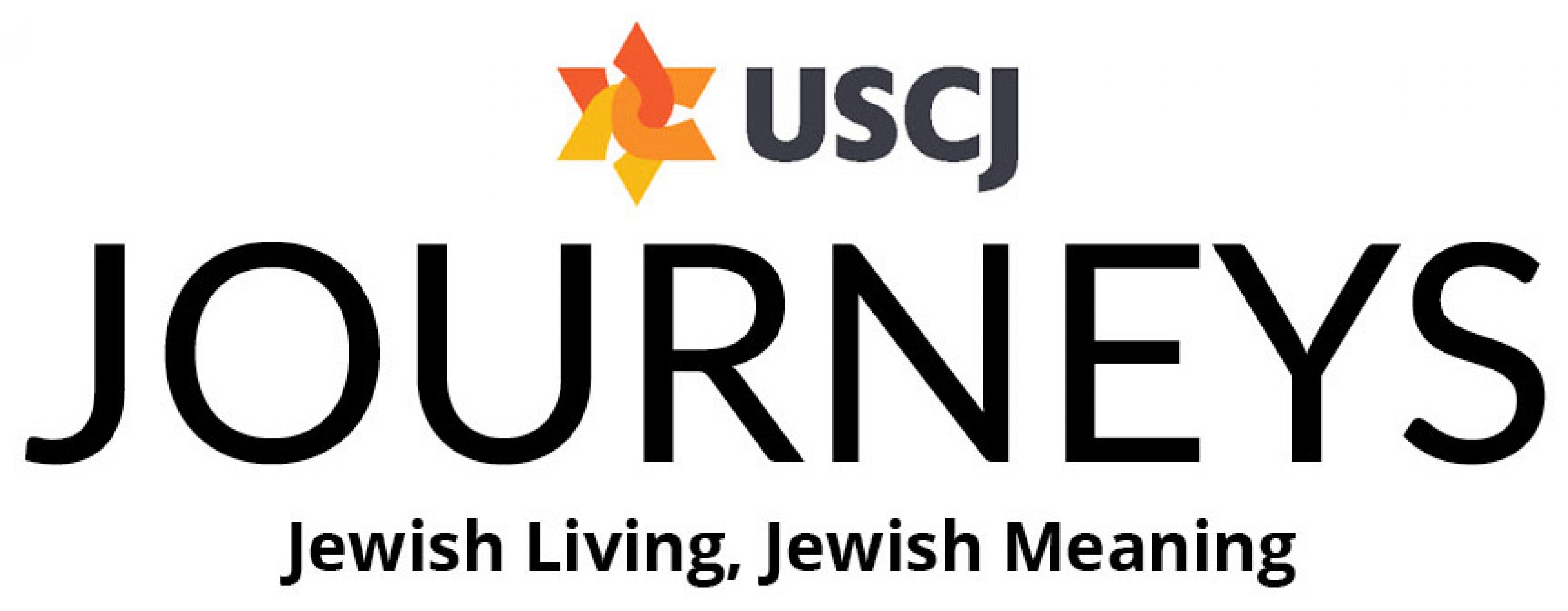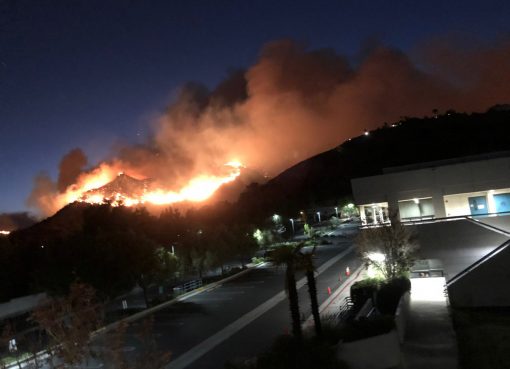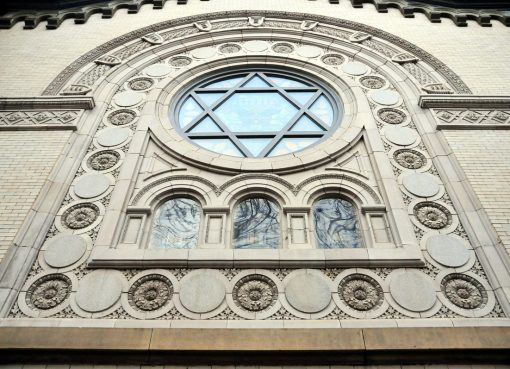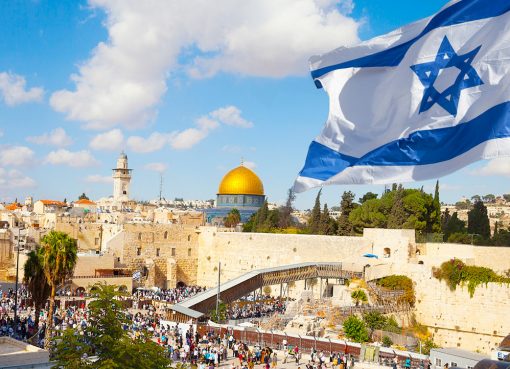 By Rabbi Yael Hammerman
By Rabbi Yael Hammerman
As a child, I imagined a mikvah to be like the pit into which Jacob’s sons threw their brother Joseph—bur rayk, an empty pit—dark and deep underground. Ironically, my image of a mikvah was waterless—ayn bo mayim—born out of touristy Israel trips to see the ancient mikva’ot on Masada and the Burnt House in Jerusalem. These mikva’ot may be archeological wonders and historical goldmines, but as a child forming Jewish touchpoints, they sparked fear of slippery stone staircases and exposure to the elements. Mikvah was not only foreign—it was terrifying.
Lucky for me, mikvah could remain an irrelevant monster hidden under the bed, because it had nothing to do with me. I assumed that mikvah only applied to converts and Orthodox Jews—and that, I most definitely was not. Growing up in Toms River—the Jersey Shore town next door to Hasidic Lakewood, NJ—I assumed that like tichels and shtreimels, mikvah was “for them.” Not for me. I was an active, highly educated Conservative Jew: Schechter school, Camp Ramah, USY, Nativ, JTS and a rabbi’s kid to boot. You name it, I was the poster-child. But in all these institutions, mikvah was part of the “null curriculum”—what educational institutions did not teach. I, therefore, had no sense that it could, or should, apply to me.
The first time I heard that mikvah could possibly apply to me, was a few months before getting married, when my husband-to-be and I met with a Conservative rabbi (who was not my father) who told us that his wife went to the mikvah monthly in observance of niddah. Twenty-three years old, on a winding path to becoming a rabbi myself—and my mind was blown. I could not believe that the mikvah monster was peeking out from under the bed.
The tug-of-war between my modern, feminist sensibilities and my commitment to Jewish tradition led me to study and explore mikvah in the months leading up to my wedding, and my eyes were opened to a fascinating and dumbfounding facet of Jewish practice. I first went to the mikvah before my wedding, at the Conservative mikvah at Beth El in Baltimore. It looked nothing like the ancient dreary dungeons I imagined in my youth. It felt nothing like a boor rayk, ayn bo mayim—the dark, empty pit of my, and Joseph’s, nightmares. Rather, it was intimate and immaculate, warm and welcoming. I went with my mom, sister and sister-in-law before our pre-wedding mani-pedis—another stop on a day of pampering and transitioning from one life phase to the next.
While my mikvah practice has waxed and waned over 10 years of marriage, as the feminist/traditionalist tug of war has continued—and as motherhood has intensified the tension over who controls my body and my time—it remains important to me that mikvah is an option and an “opt in.” As it goes with performing mitzvot regularly, most mikvah moments are not all that memorable or meaningful, as is often the case once something becomes habit. But one mikvah visit from a few years ago has stayed with me. I went to the mikvah after a very early miscarriage (before I became pregnant with my now 2-year-old son). In the taxi, on the way to the mikvah, I listened to the song Elohai Neshama:
Elohai, Neshama sh’nata’ta bi, tehora hi
My God, the Soul that you put in me, is pure.
My God, the soul you gave to me
— the almost-but-not-to-be-baby —
— that was in me, but now is not — is Pure.
She did nothing wrong. I did nothing wrong.
I sang these words as a mantra while preparing for the mikvah:
Tehora he. She is pure.
I sang these words while washing away the loss, the sadness, the tears:
Tehora he. I am pure.
Atah barata – You Created it.
Atah yatzarta – You Formed it.
Atah nefachta bi – You Breathed it into me.
I sang these words on the way home, a hopeful reminder that God and I are partners in creation, in formation and in breathing life in and out. The cycle of life may wax and wane, but on it goes.
As a rabbi and educator, I have tried to do my own small part to put mikvah on the curriculum. Inspired by the groundbreaking work of organizations like Mayyim Hayyim and ImmerseNYC, and progressive mikvah pioneers like Anita Diamant, Aliza Kline and Rabbi Sara Luria, I have tried to find ways in my own work to reclaim mikvah for the hands and hearts of non-Orthodox women. I have tried to open the hidden mikvah door to students of all ages and genders, across different phases of life.
As a college Residence Director, I brought a group of female Barnard and Columbia students to tour Manhattan’s West Side Mikvah—opening an entryway and engendering conversation and connection. As a Hebrew School Director, I bring our 5th grade class to tour the local mikvah, as part of their Jewish Life Cycle curriculum. Hebrew School students who converted as babies were brought back to see the mikvah pictured in their baby books—normalizing the conversion experience for them, and for their classmates. A student whose mom converted at the same mikvah just months before was excited to be the mikvah expert, able to find the hidden bronze Hebrew sign, tucked away on the brick townhouses of West 74th Street.
As a shul rabbi, I am now leading a diverse group of incredible women in an adult education class called “Demystifying Mikvah: Seven Sacred Steps.” We explore mikvah through studying traditional and creative uses of mikvah, and we will soon visit the mikvah for ritual use. Through mikvah, we are creating a supportive community of Jewish women.
I have learned over time that the mikvah is not a deep, dark pit. In fact, there are seven steps to support you on the way down—and seven steps to help you on your way back up. It has become my custom to say a seven-word verse when I go to the mikvah—one word on each step:
Atah barata, Atah yatzarta, Atah nefachta bi.
You Created it. You Formed it. You Breathed it into me.
Mikvah provides us with a precious opportunity, in time and space, to get in touch with ourselves, and with God—our partner in creation, in formation and in breathing through life. May you too have the opportunity to claim the mikvah and its living waters as your own.
******
About the Author
Rabbi Yael Hammerman loves creating dynamic Jewish learning experiences for students of all ages, from toddlers to older adults. She is committed to helping to build a warm, strong and engaged Jewish community at Ansche Chesed. Ordained by The Jewish Theological Seminary of America, Rabbi Hammerman also received a degree from its Davidson Graduate School of Jewish Education. Before joining Ansche Chesed, she was a student rabbi at Congregation Eitz Chaim in Monroe, New York, and Director of Student Placement at The Jewish Theological Seminary’s rabbinical and cantorial schools.
Adas Israel’s Mikvah Accommodates All
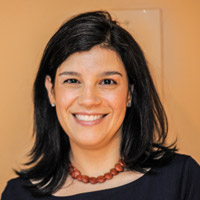
For nearly three decades, Jews in the Washington, D.C. area have been immersing themselves in the natural waters of Adas Israel’s mikvah, but in the eyes of Naomi Malka, the synagogue’s mikvah director, there was one major challenge: it wasn’t accessible for everyone.
After receiving several requests from people with disabilities who were looking to take part in the practice, the synagogue decided to renovate its mikvah so that it can easily accommodate all people, regardless of any visible or invisible limitations. “Each person’s body is holy, their way of connecting and their vehicle of doing mitzvoth and that message is loud, strong and beautiful, but it actually did not ring true for us because there were bodies that we could not accommodate here,” Naomi says. “It was really hard to tell someone in a wheelchair or someone who is visually impaired that they could not immerse in our mikvah. Now, I feel whole about it and feel much more honest in speaking that message.”
Adas Israel’s renovation, which finishes in mid-December, features a brand-new aquatic lift for easier access in and out of the water, updates to the mikvah’s hand railings, a new anteroom to help accommodate people in wheelchairs and a complete overhaul of the preparation area, which now features a lower lip to the shower, grab and hand rails around the toilet and a roll-up sink.
“For those of us who may not be disabled right now, we very well may go through temporary periods of disability or may become frail as we age,” she says. “The mikvah in particular is a ritual of transition and all of us will go through changes in our lives. To honor those changes and include everyone is extremely important. Whatever your reason for immersing yourself in the mikvah, it’s a universal experience that everyone should be able to enjoy.”

